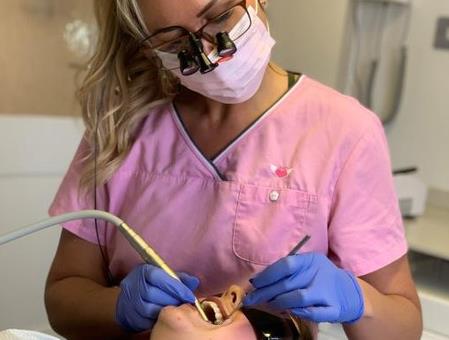
New Stem Cell Studies Find Mechanism For Regenerating Lost Teeth
The team from the Institute of Science Tokyo, used genetically modified mice and lineage-tracing techniques to shed light on the cell signaling mechanisms guiding differentiation in stem cells in the developing teeth.
"Our findings provide a mechanistic framework for tooth root formation and pave the way for innovative stem-cell-based regenerative therapies for dental pulp, periodontal tissues, and bone," said Mizuki Nagata, Assistant Professor at the Institute's Department of Periodontology.
The ability to regenerate lost teeth and their surrounding bones is considered a holy grail in the field of dentistry.
For decades, the gold standard for replacing a lost tooth has been a foreign object, such as a dental implant or a denture. While these solutions are quite effective, they cannot perfectly replicate a natural tooth's structure, function, or feel.
The studies, published in the journal Nature Communications, visualised and tracked tooth development in genetically modified mice. The researchers, thus, identified a previously unknown mesenchymal progenitor cell population and uncovered two distinct lineages: one strongly associated with tooth root development and the other with alveolar bone formation.
The first lineage originates from cells located in the apical papilla within the epithelial root sheath -- a cluster of soft tissue at the tip of the growing tooth root. These cells express CXCL12, a protein that plays a key role in bone formation within bone marrow.
Through a chemical signaling pathway known as the canonical Wnt pathway, the apical papilla CXCL12-expressing cells can differentiate not only into tooth-forming odontoblasts, but also into cementum-forming cementoblasts at the elongating tooth root and even alveolar bone-forming osteoblasts under regenerative conditions.
The other lineage is concentrated in the dental follicle, a sac-like structure that envelops the developing tooth and contributes to the formation of the surrounding anchoring tissue. The team found that a population of parathyroid hormone-related protein (PTHrP)-expressing cells can differentiate into cementoblasts, ligament fibroblasts, and alveolar bone-forming osteoblasts.
Together, the findings advance the understanding of how teeth and alveolar bone develop in vivo, providing some much-needed clues about their intricate growing mechanisms, the team said.

Legal Disclaimer:
MENAFN provides the
information “as is” without warranty of any kind. We do not accept
any responsibility or liability for the accuracy, content, images,
videos, licenses, completeness, legality, or reliability of the information
contained in this article. If you have any complaints or copyright
issues related to this article, kindly contact the provider above.
Most popular stories
Market Research

- Financewire And Tipranks Partner To Redefine Financial News Distribution
- Ethereum-Based Defi Crypto Mutuum Finance (MUTM) Reaches 50% Completion In Phase 6
- Stonehaven Circle Marks 13Th Anniversary With Hadrian Colwyn Leading Calvio Ailegacyx Innovation
- Citadel Launches Suiball, The First Sui-Native Hardware Wallet
- Motif AI Enters Phase Two Of Its Growth Cycle
- Dubai At The Centre Of Global Finance: Forex Expo 2025 Redefines The Trading Landscape



















Comments
No comment